Affiliate links on Android Authority may earn us a commission. Learn more.
Google Pixel 4 XL vs Apple iPhone 11 Pro Max: Apples vs Oh So Oranges
Published onNovember 5, 2019
Let’s be honest, the Pixel 4 XL might be an Android device, but it doesn’t quite feel like a direct competitor to its Android-powered brethren. With an emphasis on simplicity and camera performance over bells and whistles, the Pixel line feels a lot like an Android iPhone.
I’ve been using the Pixel 4 XL for about two weeks now. I also reviewed the iPhone 11 and iPhone 11 Pro Max earlier this year. There are some pretty clear similarities, but also some crucial differences beyond just the OS these devices run.
How do the Pixel 4 XL and the iPhone 11 Pro Max compare? Let’s jump in and take a look.
A lesson in minimalism: two different approaches with the same goal
Google Pixel 4 XL
- 75.1 x 160.4 x 8.2mm
- 193g
- Just Black, Clearly White, Oh So Orange
Apple iPhone 11 Pro Max
- 158 x 77.8 x 8.1mm
- 226g
- Space Gray, Silver, Midnight Green, Gold
Both Apple and Google strive for simple yet refined phone designs. While their overall design languages have clear differences, the Pixel family has always given off somewhat of an iPhone-like vibe. This remains true with the Pixel 4 XL, at least on the rear.
Both phones feature a camera setup in square housings with rounded edges, though the iPhone 11 Pro Max’s cameras stick out both literally and figuratively. Pixel has taken a more subtle approach, as the camera lenses and sensors blend into the black color of the housing.
This year Google ditched its two-tone design pattern on the rear, leaving a more minimal rear that looks pretty similar to the iPhone 11 Pro Max (save for the obvious difference in logos.)
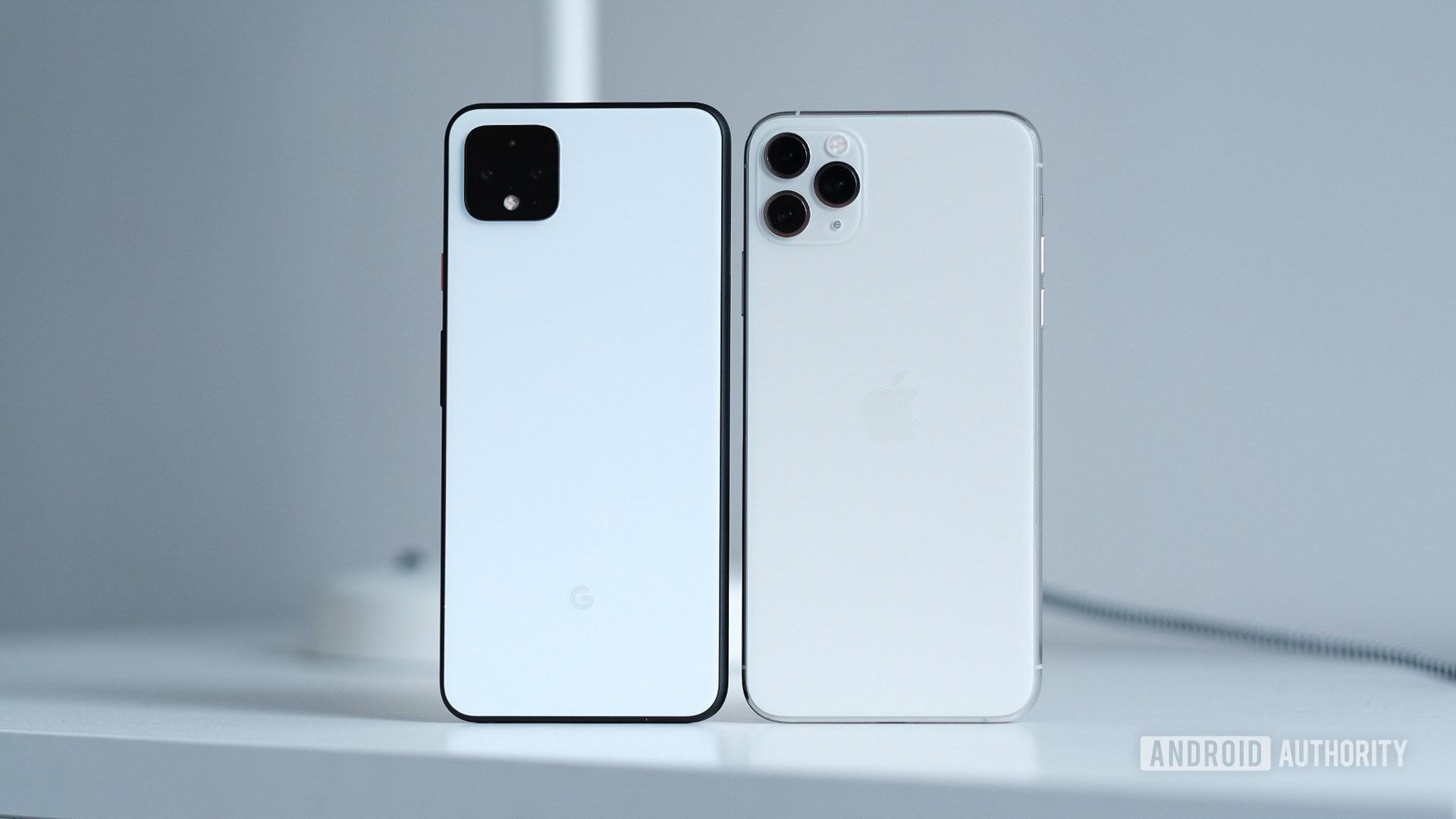
Turning over the handset you’ll find Apple and Google are taking very different approaches here. While the iPhone 11 Pro Max features its infamous notch, the Pixel 4 XL moves away from notches this year. Instead Google has a larger bezel area on top that houses its camera and the new Soli sensor (which we’ll discuss later.)
I don’t feel like this solution looks much better than the notch, but it doesn’t look worse either. If you hated the notch, you might appreciate the change.
Probably my favorite design element on the Pixel 4 XL is the black aluminum frame. I just love the way it looks — especially in the Oh So Orange color.
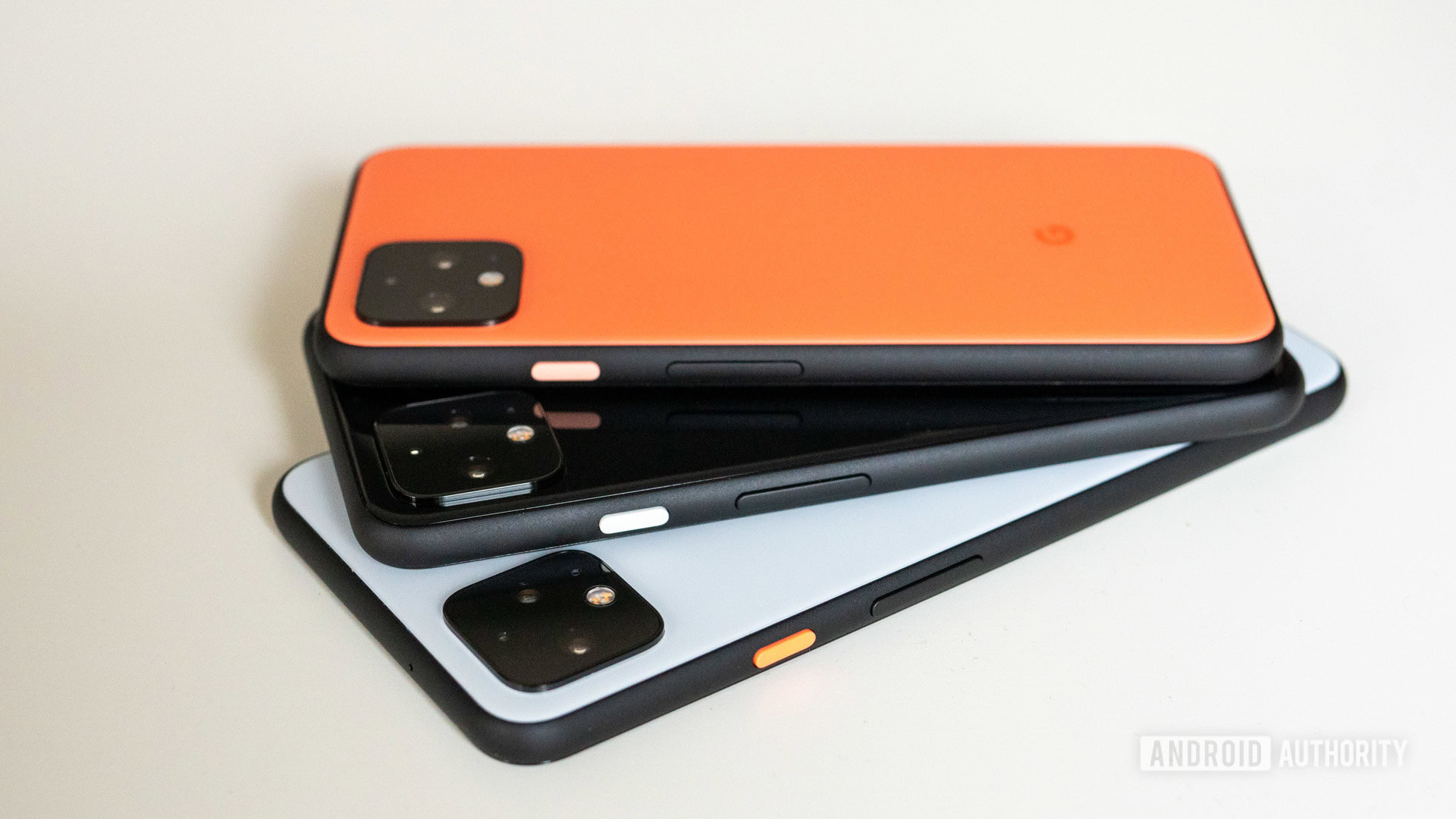
If you like lighter phones, the iPhone 11 Pro Max might disappoint at 8 ounces, though the Pixel 4 XL isn’t much lighter at 6.8 ounces. I think both phones feel great, but the new black sides on the Pixel 4 XL makes it a bit grippier. On the rear the iPhone and Pixel both have a matte covering, unless you get the Clearly Black configuration of the Pixel 4 XL (it’s glossy.)
At the end of the day, I prefer the Pixel 4 XL’s design. For me, it comes down to three reasons:
- The black sides on the Pixel 4 XL stand out in a good way.
- The iPhone 11 Pro Max has really boring professional colors, whereas the Oh So Orange helps this phone feel different from the pack.
- While I got used to the iPhone 11 Pro Max’s camera design, the Pixel 4 XL does a better job of helping it blend in. That said, neither camera design is particularly beautiful.
Objectively, the iPhone 11 Pro Max *might* be slightly more durable thanks to the stainless steel frame. Both phones have the same IP68 certification, though Apple claims the iPhone can handle a depth of 4 meters vs the Pixel’s 1.5 meters.
Google one-ups Apple in the display game, but just barely
Google Pixel 4 XL
- 6.3-inch Quad HD+ OLED
- 3,040 x 1,440 pixels, 537ppi
- 19:9 aspect ratio
- Adaptive 90Hz refresh rate
Apple iPhone 11 Pro Max
- 6.5-inch Super Retina XDR OLED
- 2,688 x 1,242 pixels, 458ppi
- 2,000,000:1 contrast ratio
Both phones have big displays, though the iPhone 11 Pro Max is slightly larger at 6.5-inches, versus the 6.3-inch display found on the Pixel 4 XL.
Apple and Google both utilize OLED technology, so you get deep black and vibrant colors. The Pixel wins in resolution, at 3,040 x 1,440 vs 2,688 x 1,242. In reality, both screens look pretty sharp and you won’t necessarily immediately notice the difference.
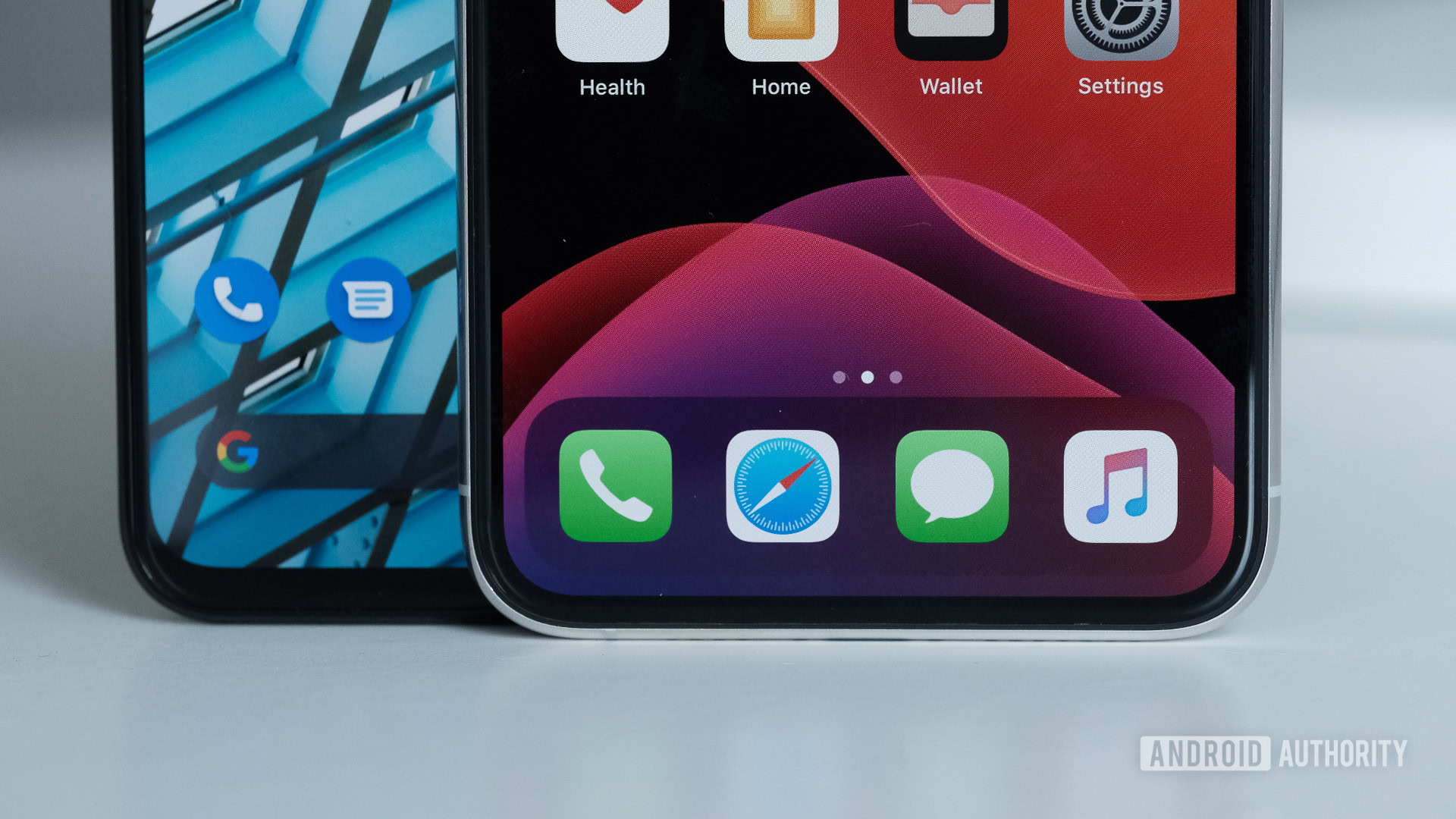
The Pixel 4 XL offers a 90Hz variable refresh rate, as opposed to the iPhone’s 60Hz display. A variable display means it intelligently bumps up from 60Hz to 90Hz in supported apps and games. The end result is a smoother, snappier experience in some situations (such as games.)
To Apple’s credit, the iPhone 11 Pro Max is the better phone for outdoor use, with a pretty much unrivaled screen brightness. The Pixel 4 XL is much dimmer, though I still found it reasonably easy to use outdoors unless directly in sunlight.
Ultimately the Pixel 4 XL has a better display, but the iPhone 11 Pro Max’s display is no slouch either.
Performance
Google Pixel 4 XL
- Snapdragon 855
- 6GB RAM
- 64GB/128GB storage
- Titan-M security module
- Pixel Neural Core
- AR Core
Apple iPhone 11 Pro Max
- Apple A13 Bionic
- 4GB RAM
- 64, 256, or 512GB storage
iPhones are faster than Android devices, doesn’t matter how you slice it. When an OS has to support dozens of phones and countless drivers, it’s going to have optimization issues. We’ve seen it with Windows versus Mac OS, and the same applies when comparing Android to iOS.
Both handsets feature high-end silicon, with the iPhone offering the new A13 Bionic and the Pixel 4 XL turning to the Snapdragon 855. Looking at benchmarks alone, it’s pretty obvious that Apple knows how to make its hardware and software play nicely together. The iPhone 11 Pro Max scores a 3,478 on Geekbench 5, while the Pixel 4 XL has a more modest 2,300. The Pixel 4 XL also scored slightly less than the iPhone 11 Pro Max on 3DMark’s Sling Shot test, scoring 4,769 vs the iPhone’s score of 5,404.
While performance might not be as good by the numbers, AI is one area the Pixel 4 XL excels. The Pixel 4 XL also has its own secret weapon of sorts: the Pixel Neural Core. You can read more about what it does here, but essentially this core allows for improved AI performance. This opens the door to real-time image editing, offline speech transcription, and more.
In real world scenarios like opening apps and playing games, both phones offer a very similar experience. Where the iPhone wins is in processor intensive tasks like video rendering.
Overall the iPhone is faster and offers better performance, but you probably won’t notice the difference in day to day use. Both phones are extremely speedy.
Hardware, biometrics, and the Soli Sensor
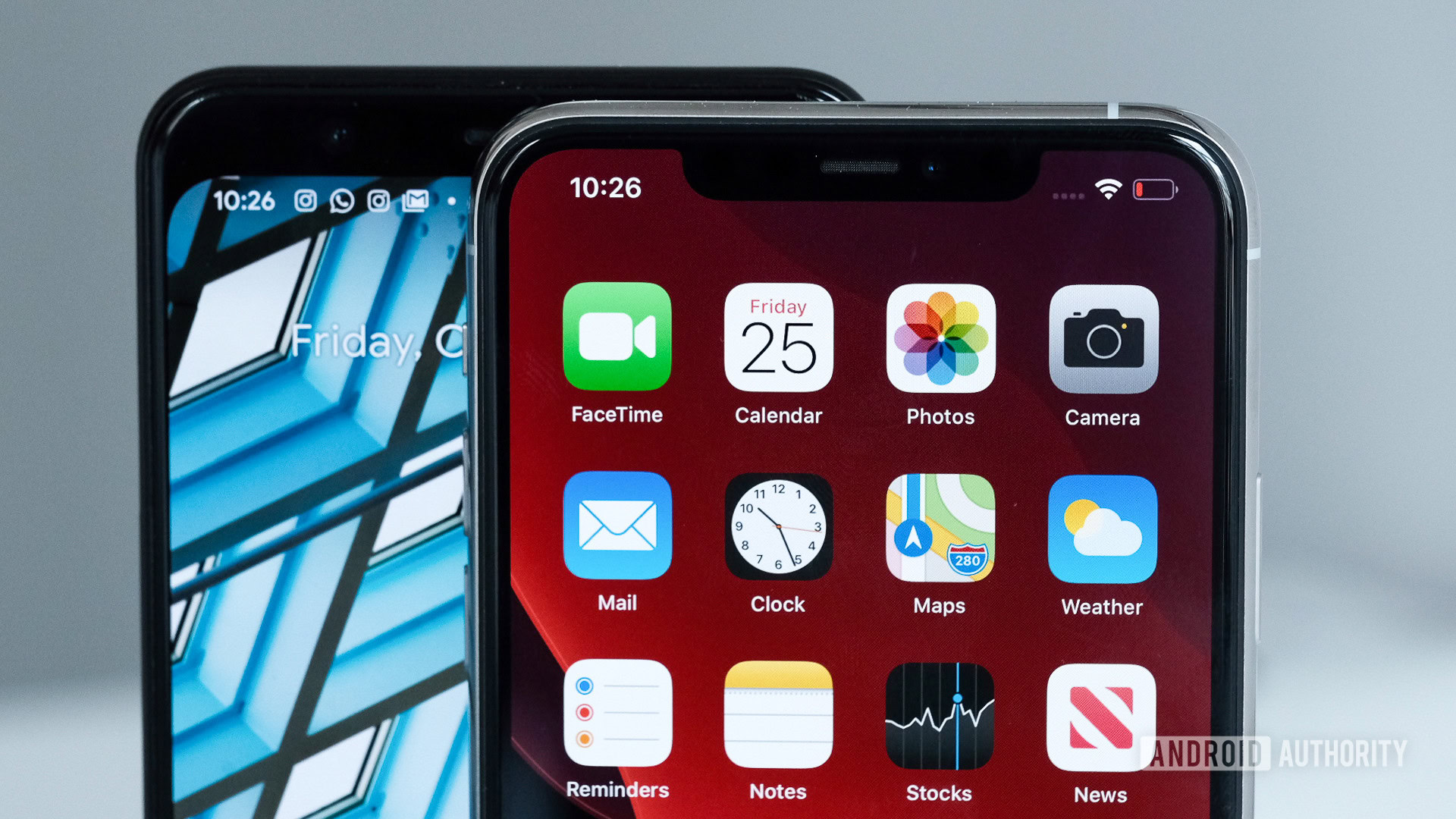
Neither phone offers extras like microSD and both ship with 64GB base storage. In 2019 this is less than puny, especially when pretty much every other phone on the market starts at a base of 128 or even 256GB of storage.
We already mentioned that the Pixel 4 XL and iPhone 11 Pro Max are without fingerprint scanners. Instead the phones utilize face unlock technology as their only means of biometric security. While the methods are mostly similar, the Pixel 4 XL has had some weird controversy around the fact it will unlock even if your eyes are closed (though Google is working to address this.) On the bright side, Google’s unlock technology is faster than Apple’s and honestly impressively accurate. I had many situations where the iPhone 11 Pro Max failed to recognize me but this has been a pretty rare occurrence with the Pixel 4 XL.
The secret behind the Pixel 4 XL’s speedy face unlock technology is Google’s new Soli radar chip. The radar senses you’re getting ready to reach for it and prepares to scan even before you actually bring it up to your face. Soli also enables Google’s new Motion Sense features, which are basically new hands-free gestures such as swiping to change songs or to stop an alarm.
Soli isn’t a much-have feature but it does have a lot of potential. Google has promised more functionality over time and that includes the potential to open it up to third-party developers. To read more about Soli and the rest of its features, head here.
The Pixel 4 XL has pretty awful battery life, especially compared to the iPhone 11 Pro Max
Google Pixel 4 XL
- 3,700mAh battery
- 18W/2A charging brick
- Qi wireless charging
- USB-C with USB-PD 2.0
Apple iPhone 11 Pro Max
- 3,969mAh battery
- 18W fast charging
- Qi wireless charging
- Thunderbolt
Historically iPhones haven’t had the best battery life, and neither has the Pixel series. The iPhone 11 Pro Max addresses battery life concerns in a big way, packing in a 3,969mAh battery that — when combined with Apple’s great software/hardware optimizations — easily can make it through two days of use without skipping a beat.
During my time reviewing the iPhone 11 Pro Max I easily could make it to 7 hours of screen-on or more. In fact, when playing around with a video loop test I achieved 13 hours of screen-on time. While the latter wasn’t necessarily a realistic use case, the point is the Pro Max has more than enough juice even for heavy users.
Battery life is one of the iPhone 11 Pro's key strengths.. and the Pixel 4 XL's biggest weakness.
Unfortunately, this is one lesson Google didn’t learn this year. Despite the criticism of Pixel 3 family, the Pixel 4 XL did nothing to improve its battery situation. While the Pixel 4 is significantly worse off, the Pixel 4 XL isn’t exactly a battery champion either. It’s 3,700mAh battery just isn’t big enough for a device of this size.
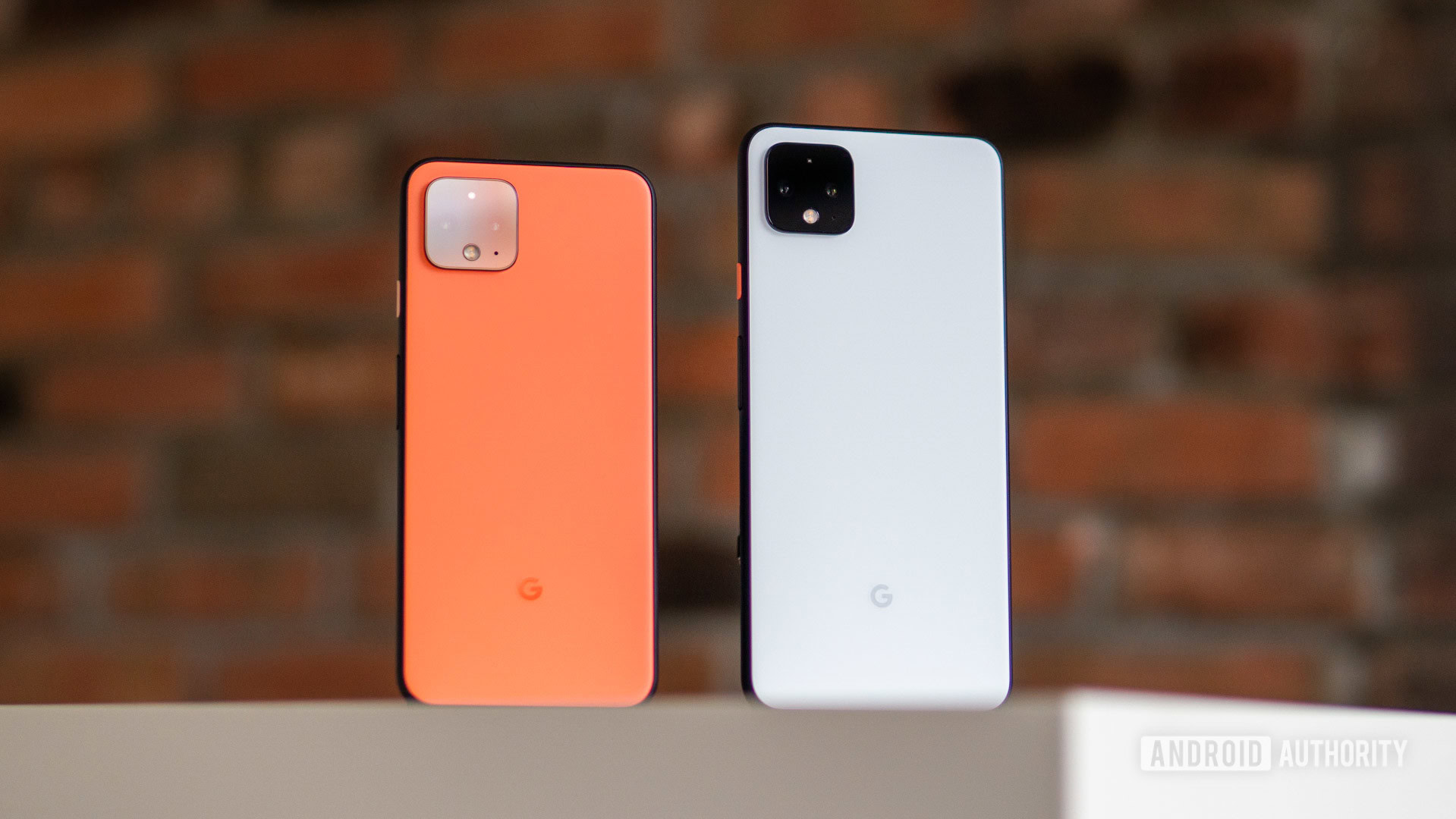
I typically get up around 6am each day and take my phone off the charger. By the end of my workday the phone typically needs charging and rarely makes it all the way to bedtime without needing a top off. For most users, the Pixel 4 XL will make it through a workday, but if you’re going to be away from an outlet for most of the day, bring a power bank with you.
The good news for the Pixel 4 XL is that it charges reasonably fast, though there are faster charging devices out there. The 18-watt charger can go from 0 to 42 percent in about 30 minutes. This was fairly similar to my experience with the iPhone 11 Pro Max’s quick charger, though I’d say the iPhone 11 Pro Max was maybe a hair faster.
Both the Pixel 4 XL and the iPhone 11 Pro Max offer wireless charging as well, if that’s your thing.
Near-even camera performance, at least when it comes to photos
Google Pixel 4 XL
- Main camera:
- 12.2MP sensor, ƒ/1.7 aperture
- 1.4μm pixel size
- 77-degree FoV
- OIS + EIS, PDAF
- 2x tele camera:
- 16MP sensor
- ƒ/2.4 aperture
- 1.0μm pixel size
- 52-degree FoV
- OIS + EIS, PDAF
Apple iPhone 11 Pro Max
- Wide:
- 12MP sensor, f/1.8 aperture
- 26mm
- OIS
- Ultra-wide:
- 12MP, f/2.4
- 13mm
- 12MP, f/2.4
- Telephoto:
- 12MP, f/2.0
- 52mm
- OIS, 2x optical zoom
Both phones gain an extra lens this year. The iPhone graduates to a triple camera setup consisting of a standard, ultrawide, and telephoto lens. The Pixel has always been a single camera experience on the rear, but now a telephoto lens joins the standard sensor.

With most mobile cameras now offering ultrawide and telephoto, Google’s choice to leave out ultrawide image support is a bit of a sore spot for some. I mostly shot with the default lens on the iPhone 11 Pro Max during my review period, but the option to switch to ultrawide was nice.
When I reviewed the iPhone 11 Pro Max, I said it arguably had the best mobile camera to date, I also noted this could change very soon when the Pixel 4 arrived. As it turns out, the two phones compare very favorably with one another.
Late last month we pitted Google Pixel 4 (and XL) against the iPhone 11 Pro Max — as well as the iPhone 11, HUAWEI P30 Pro, Samsung Galaxy Note 10, and OnePlus 7T. In our flagship comparison we concluded the Pixel 4 was the winner overall. Of course if you take a stroll around the Internet you’ll find tons of camera comparisons that draw different conclusions in favor of the iPhone 11 series.
The Pixel 4 XL and iPhone 11 Pro Max have cameras that are so good it's really hard to declare a winner.
Mobile cameras are getting so good, it’s becoming increasingly harder for manufacturers to massively jump ahead of each other, which is a good thing for consumers. The iPhone 11 Pro Max and Pixel 4 XL both offer great camera, and similar, experiences.
In my own experience, the Pixel 4 XL and the iPhone 11 Pro Max both take amazing photos in pretty much any situation. I wouldn’t say I necessarily prefer one over the other. Sometimes the iPhone 11 Pro is going to take the better shot, sometimes it’ll be the Pixel 4 XL.
To help you make decide, I’ve included a few samples from our camera comparison below. Be sure to check out the full post to get an even closer look. Editor’s note: the images below were taken with a Pixel 4 and an iPhone 11 Pro Max, but the camera experience is the same on the XL.
While the Pixel 4 XL might offer a slightly better photography experience than the iPhone 11 Pro Max (depending who you ask), the same can’t be said for videography. The iPhone 11 Pro Max offers 4K at 60fps on the rear and front cameras, while the Pixel 4 XL doesn’t even support 60fps on the primary shooter.
The Pixel 4 shoots decent 1080p video at 30, 60, and 120fps, but you can only shoot 4K video at 30fps on the rear camera. It seems strange Google focuses so much on photography but doesn’t give the same detail to videos. Hopefully that’s something they’ll address by the time the Pixel 5 rolls around.
Software and updates
iOS and Android are two very different operating systems. Both are fast, functional, and offer great app support.
Apple’s iOS is known for its ease of use and general simplicity. However, there aren’t a ton of bells and whistles, and Apple is typically slower to make major feature changes. Apple is also known for fast updates and continued OS support of its devices long after most Android OEMs have abandoned their devices.
The Pixel series is also known for forgoing bells and whistles in favor of a clean, easy-to-use experience. Since the updates come straight from Google, speed isn’t an issue either. Google doesn’t support it’s devices as long as Apple does, however.
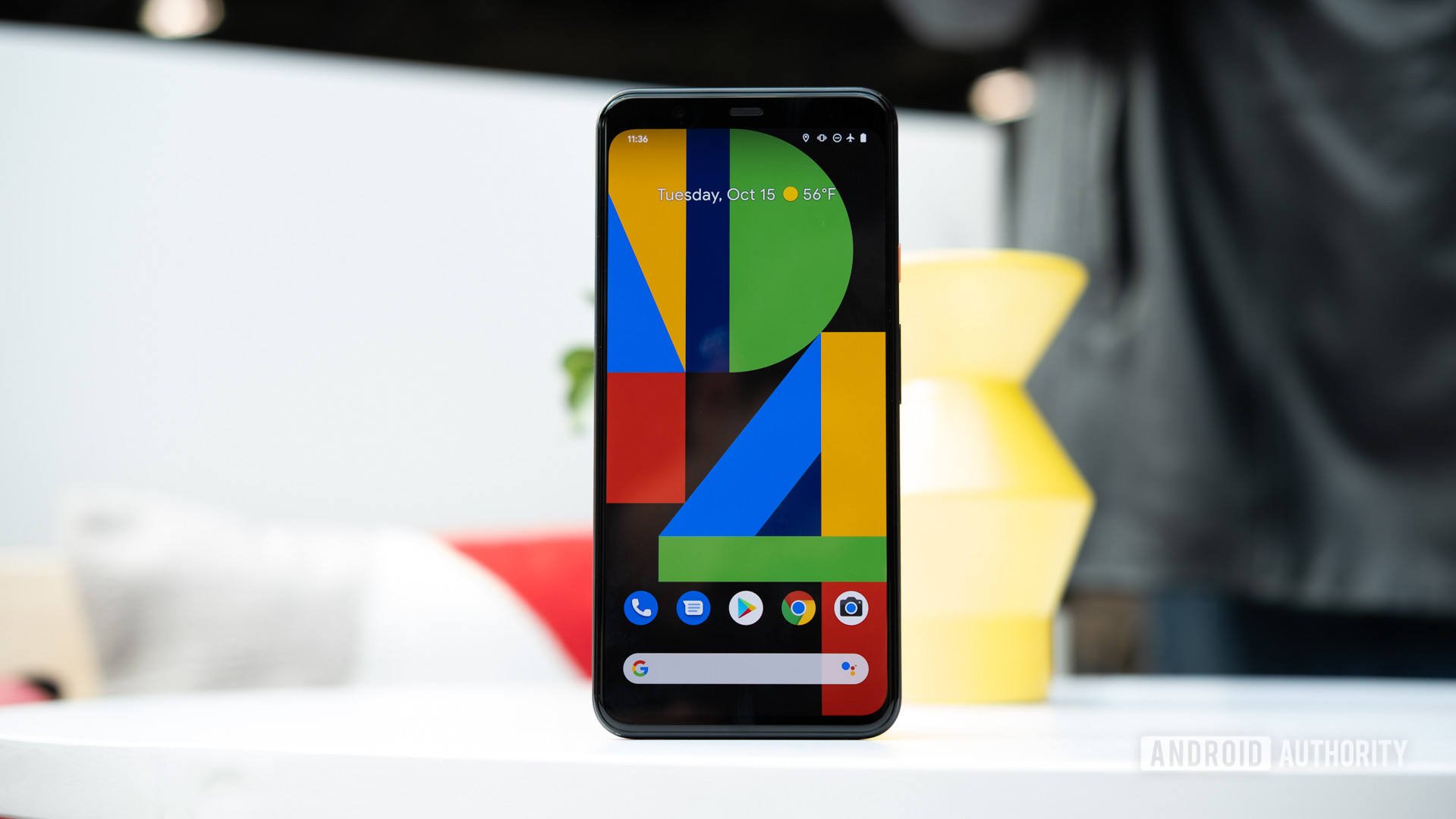
Aside from Android’s reputation of being more customizable, the other big software difference worth focusing on is the included assistant. While iOS has Siri integration, Android has Google Assistant. Google Assistant is considerably more advanced at this point, and that was before the Pixel 4 XL.
The Pixel 4 and 4 XL introduce the New Google Assistant, which is mostly the same assistant, but Google has moved language processing on-device. This not only makes it faster, it means many functions now work even if your internet connection doesn’t.
Google needs to learn the right lessons from Apple and other OEMs, not the wrong ones
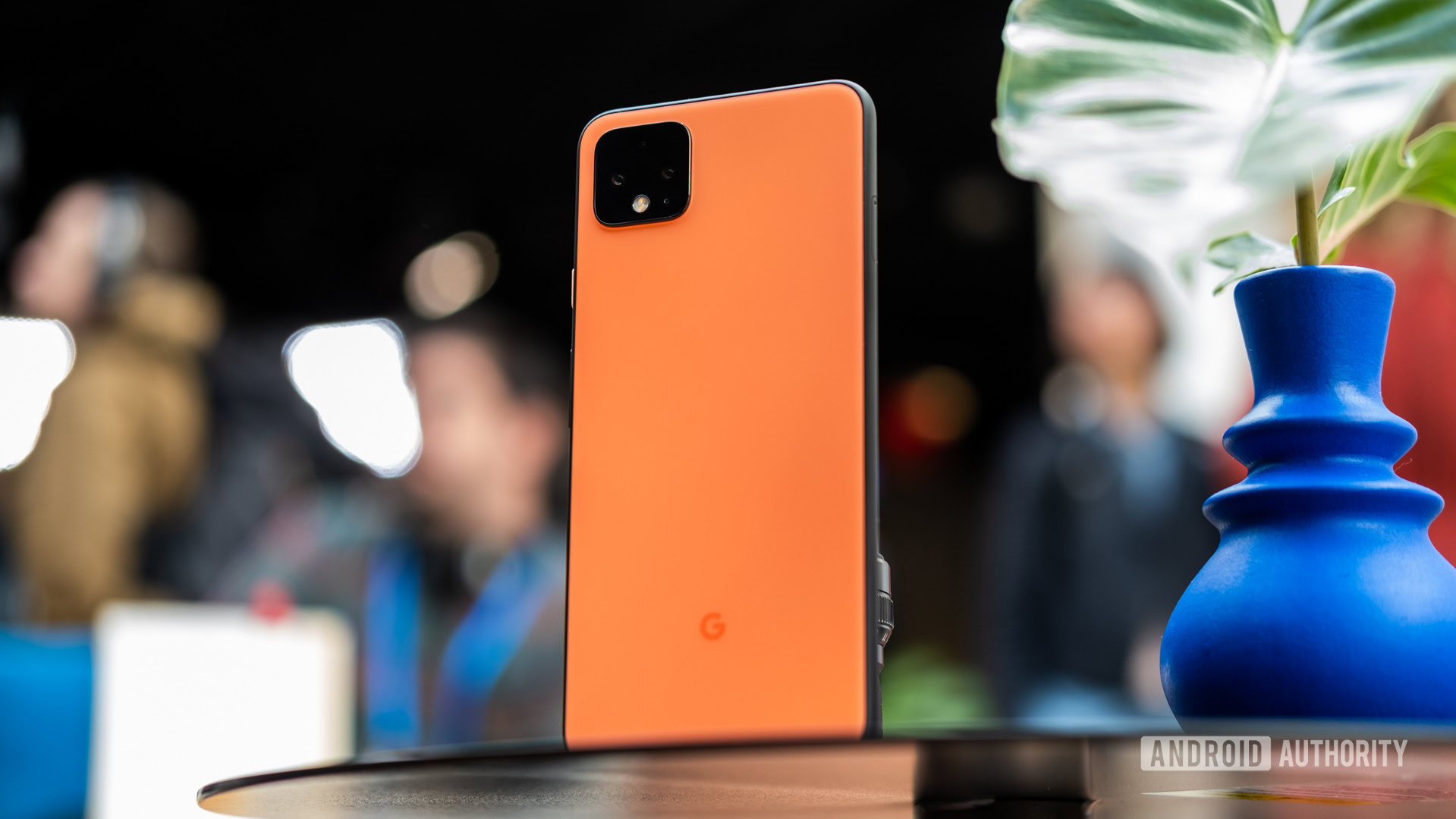
I’ve already said the Pixel 4 XL and iPhone 11 Pro Max have a lot in common in terms of design and philosophy. That’s not necessarily a bad thing. Google understands many of us want a device with minimal design, fast updates, and a great camera. Apple also understands this.
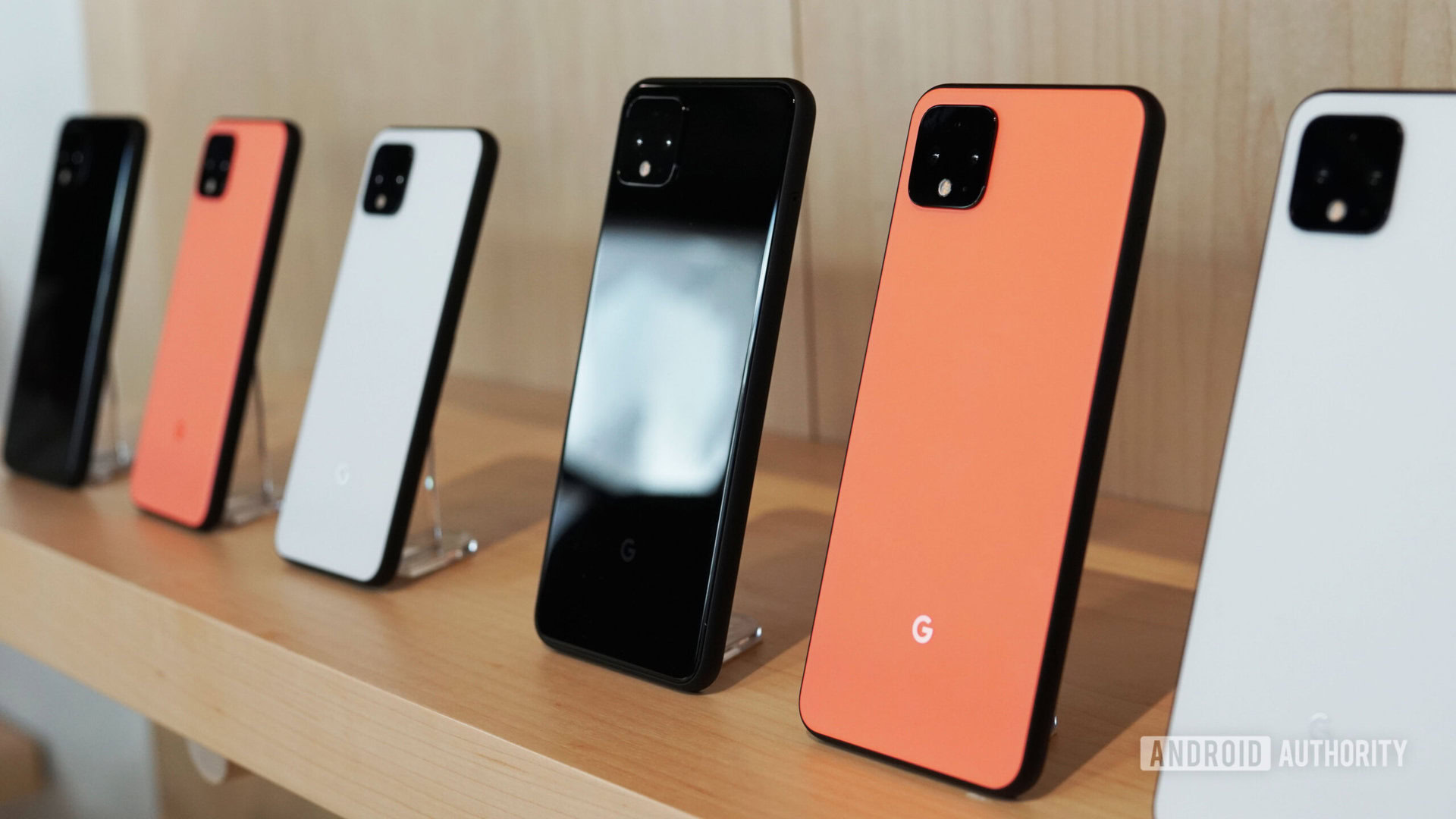
Where I question Google is in decisions like leaving out the headphone jack adapter or only including 64GB of base storage. Even things like leaving out the ultrawide lens or keeping the battery size small because “we don’t really need it” feel a bit like the Apple mentality I’ve come to dislike.
Google shouldn’t be afraid to be itself! I personally prefer the Pixel 4 XL over its predecessor, which I used daily for over a year. Some of the biggest things I like are completely down to Google’s DNA — the funky Oh So Orange design with the black accents on the frame, the improvements to Assistant, the excellent camera experience thanks to advanced AI. There’s no need to copy Apple’s mentality or pay attention to its trends, especially not the questionable ones.
I’m not saying Google shouldn’t learn from its competitors, but they also need to understand their audience better and pay more attention to their demands. If we wanted Apple’s guiding hand and overpricing, we’d buy Apple products. The Pixel 4 XL is a great phone and in many ways a step in the right direction, but I can’t help but feel Google could do even better if it wasn’t worried about appealing to the mainstream iPhone crowd.
Both the Pixel 4 and iPhone 11 are expensive
The Google Pixel 4 starts at $799 while the Pixel 4 XL pricing begins at $899. In contrast, the iPhone 11 starts at $699 but jumps up to $999 for the iPhone 11 Pro and a whopping $1099 for the iPhone 11 Pro Max. That’s 64GB of storage all around, though there are options for larger configurations that bring the pricing even higher.
If you love big phones and like saving money, the Pixel 4 XL is $200 cheaper than the 11 Pro. Of course if you want a good phone and don’t want to spend a fortune, we’d highly recommend checking out the OnePlus 7T.
The verdict
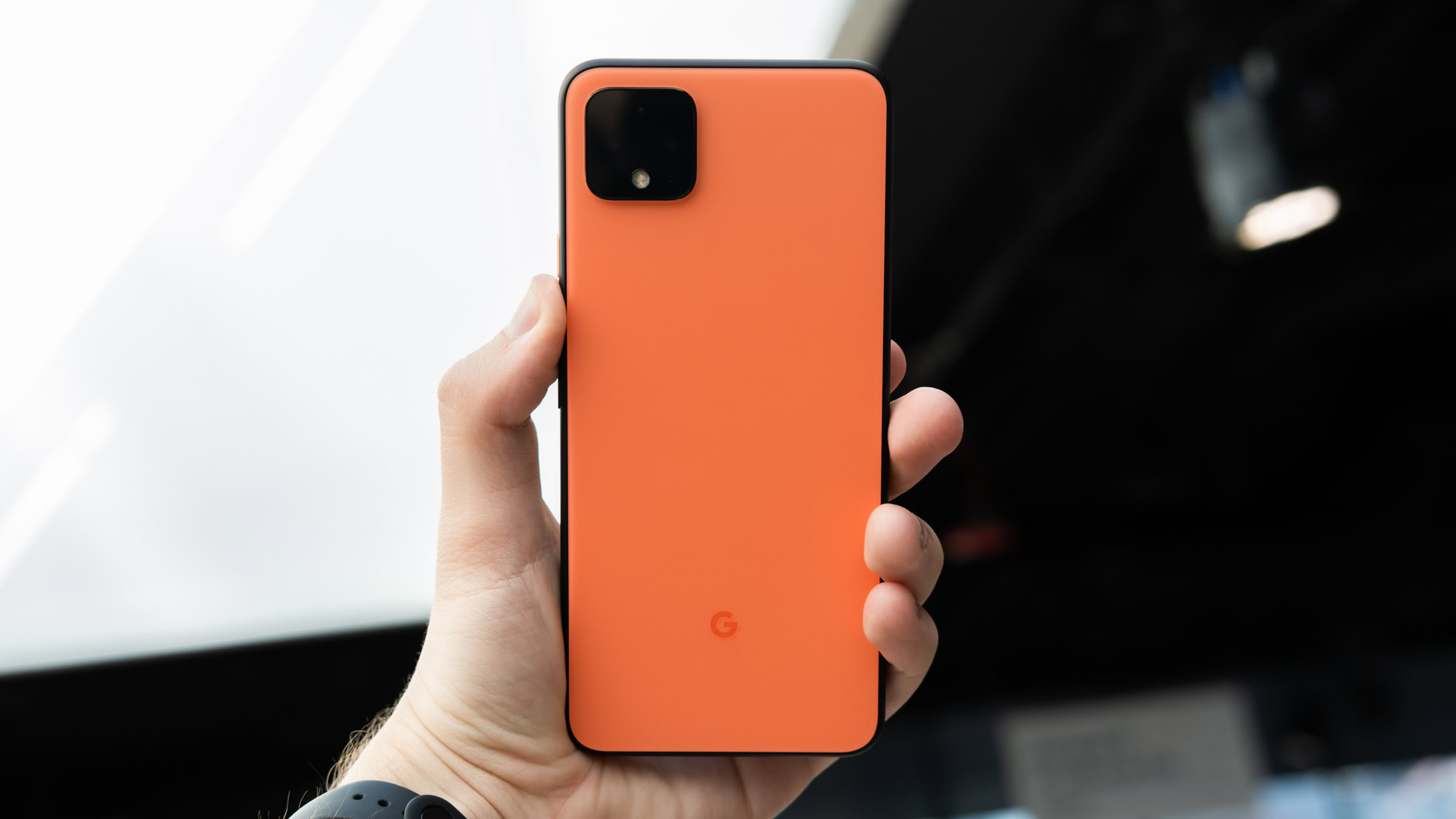
This is Android Authority, so you already assumed that the Pixel 4 XL would be the winner right? To be fair, it’s not just an Android vs iOS thing for me. I enjoy Google’s design a bit more, I love the improvements to Assistant, and even the little things like the Soli sensor help it stand out. Okay, so yeah I also prefer Android.
Honestly, battery life is the only thing that keeps the Pixel 4 XL from being the perfect phone in my opinion. I had a few qualms with my Pixel 3 XL (RAM/performance issues) but that’s not the case at all with the Pixel 4 XL. I’d highly recommend the Pixel 4 XL if you’re looking for a well-rounded Android device with fast updates and an excellent camera. I’d also recommend it if you’re an iPhone user that is ready for something different.
That said, the Pixel 4 XL isn’t for everyone. I also have to admit that the iPhone 11 Pro Max is still one of my favorite phones on the market, even if I’m not an iOS fan at all.
Who is the iPhone 11 Pro Max best suited for?
- If you’re into mobile videography, the iPhone 11 Pro Max is the superior option. Same goes if you enjoy ultrawide images and don’t want to live without them.
- If you can’t live with the Pixel 4 XL’s puny battery life, the iPhone 11 Pro Max is a better choice here. Though if you want to stick with Android, I’d recommend the OnePlus 7T or Samsung Galaxy S10 Plus instead.
- If you prefer iOS, obviously the iPhone 11 Pro Max is a better choice.
What do you think of the Pixel 4 and 4 XL? How do you feel they compare to the iPhone 11 series? Let us know your thoughts in the comments.